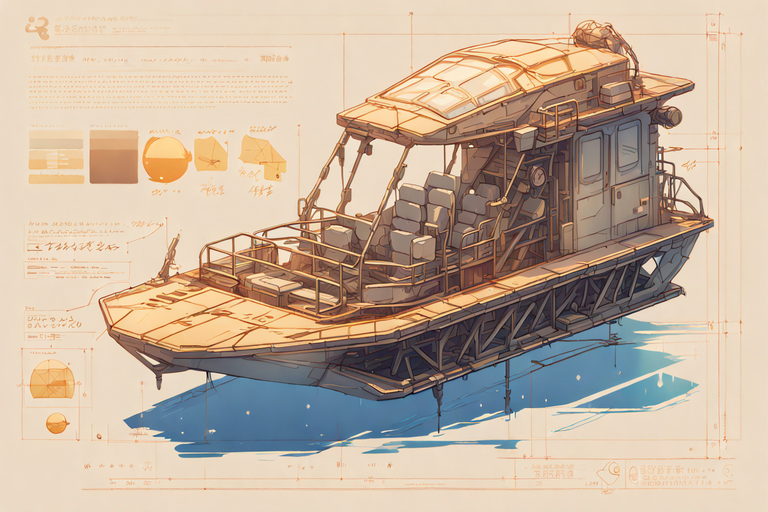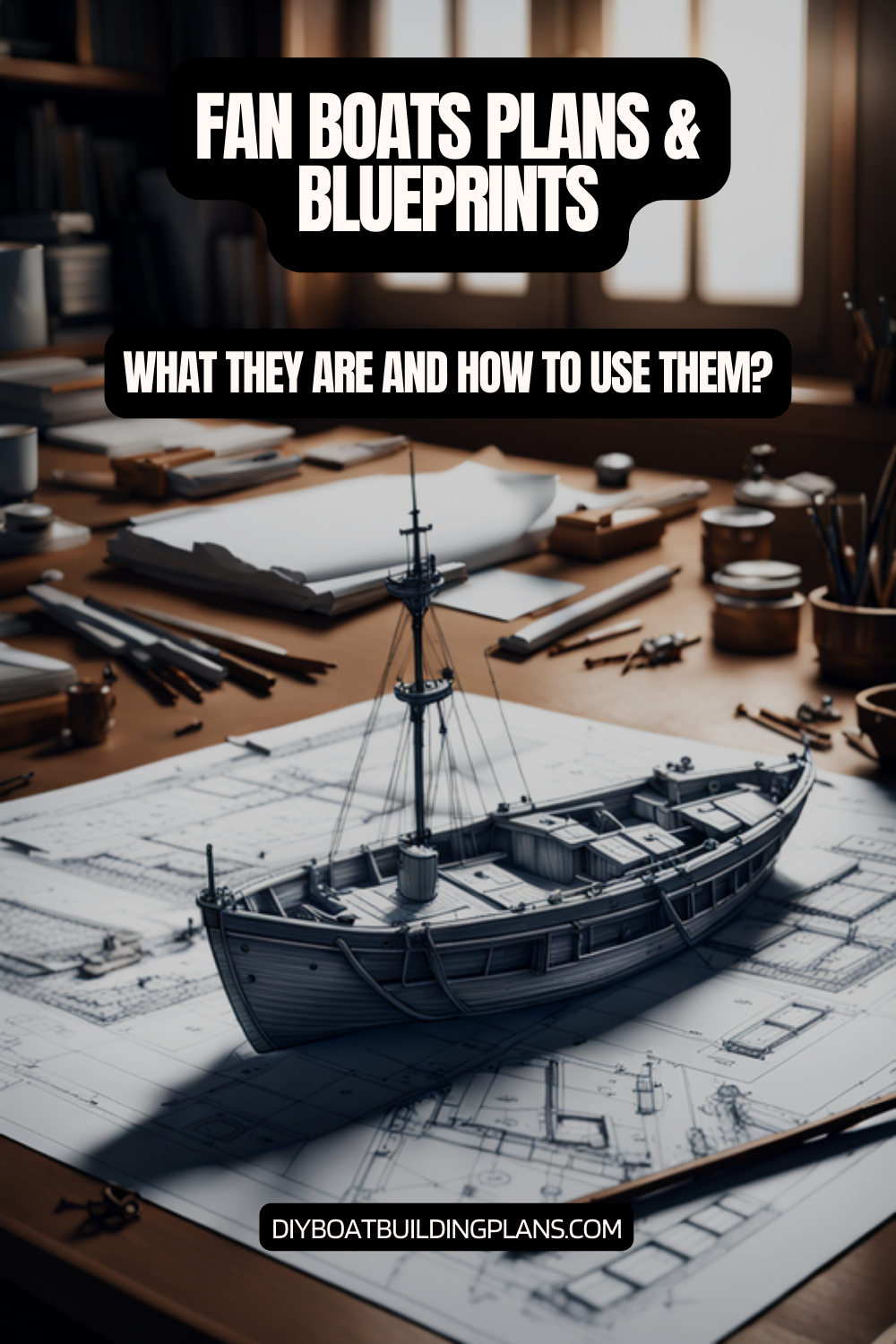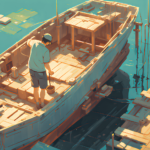Ever dreamed of making a boat that glides through shallow waters and hidden swamps? What if you could build your own fan boat with just a few tools and some creativity?
DIY fan boat plans let adventurers and water lovers build a unique vessel. These homemade designs aren’t just projects—they open doors to exploring hard-to-reach waters and making unforgettable memories.
Building a fan boat needs careful planning, knowledge of materials, and a love for innovative boat building. Aluminum and marine-grade plywood are your canvas. Specialized propulsion systems turn your idea into a boat that can go where others can’t.
Key Takeaways – Fan Boat Plans & Blueprints
- DIY fan boats enable exploration of shallow and challenging water environments
- Customizable designs allow for personal creativity and specific functional needs
- Potential for cost-effective water transportation and recreational activities
- Requires careful material selection and strategic construction techniques
- Offers unique opportunities for outdoor enthusiasts and water adventurers

Introduction to DIY Fan Boats
Fan boats are a mix of engineering and exploring the water. They use airplane-style propulsion and boat tech. This lets fans move through tough water with ease.
What Is a Fan Boat?
A fan boat, also known as an airboat, moves on water with a strong propeller. It sits on a flat hull. This design lets fan boats go through:
- Shallow waters
- Dense vegetation
- Marshy terrain
- Areas with little water
Benefits of Building Your Own Fan Boat
Building your own fan boat has big perks. With DIY plans, you can make a boat that fits your needs perfectly.
| Advantage | Description |
|---|---|
| Customization | Design unique features matching personal requirements |
| Cost Savings | Significantly reduce expenses compared to commercial models |
| Learning Experience | Develop mechanical and engineering skills |
“Building your own fan boat transforms a hobby into an extraordinary journey of creativity and engineering prowess.”
Building a fan boat starts with picking the right materials like exterior plywood. You need to design a strong hull and add a powerful engine. It takes time to learn about mechanics, measure well, and assemble carefully.
Essential Tools and Materials Needed
Building a fan propelled boat needs careful planning and the right tools. DIY fans can turn their dreams into reality with the right approach.
Creating a DIY shallow water boat requires choosing the right tools and materials. The right tools and materials can make a big difference.
Basic Tools for Fan Boat Construction
- Power drill with variable speed settings
- Saber saw for precise cutting
- Hand belt sander for smooth finishing
- Hack saw for metal work
- Miter saw for accurate angle cuts
Recommended Materials for Your Project
Choosing the right materials is key for a durable and lightweight fan propelled boat.
| Material | Quantity | Estimated Cost |
|---|---|---|
| 5-ply 1/4″ Exterior Plywood | 4 sheets | $80 |
| 6oz Bidirectional Fiberglass Cloth | 8 yards | $45 |
| Polyester Resin | 1.5 gallons | $35 |
| Ring Shank Nails | 200 pieces | $15 |
“The key to a successful DIY shallow water boat is patience, precision, and proper material selection.” – Experienced Boat Builder
DIY fan boat projects take about 20-30 hours of prep work. Your total cost can be around $300, not counting the engine. Plans from Glen-L and AirBoatFun offer great help for beginners.
Additional Considerations
- Buy materials from local stores
- Invest in quality safety gear
- Follow detailed plans carefully
- Plan enough time for each step
With the right tools, materials, and effort, your DIY shallow water boat project can be a fun and rewarding journey.
Understanding Fan Boat Designs
Creating the perfect homemade airboat design needs careful thought. Fan powered boat blueprints are made for specific needs and places. They are not one-size-fits-all.
When looking at fan boat designs, builders must think about a few key things:
- Hull shape and configuration
- Water navigation requirements
- Intended primary use
- Passenger capacity
Exploring Different Fan Boat Configurations
Homemade airboat designs usually fall into three main types:
- Flat-Bottom Hulls: Great for stability and ease
- Shallow-V Hulls: Good for moving around in different water
- Deep-V Hulls: Best for tough water conditions
“The right fan powered boat blueprint turns a simple project into an amazing watercraft experience.”
Selecting Your Optimal Design
Choosing the best fan boat design takes planning. Think about the water type, how many people you’ll carry, and your building skills. These will help pick the right homemade airboat design.
Experts say start with simple fan powered boat blueprints if you’re new. As you get better, move to more complex designs.
Unlock the secrets to building your dream boat with MyBoatPlans! With detailed plans for over 518 boats and expert video tutorials, you’ll have everything you need to create your perfect vessel. Click here to begin your journey!
Step-by-Step Guide to DIY Fan Boat Plans
Starting a DIY fan boat project needs careful planning and precision. You can use fan boat kits or make your own plans. Knowing how to build it is key to success.

Getting ready is the first step to a great fan boat. Before you start building, make sure you have all the materials and tools you need.
Initial Layout and Measurements
Creating a detailed blueprint is the first step. Start by:
- Sketching detailed design plans
- Measuring marine-grade plywood sheets precisely
- Calculating hull dimensions carefully
Constructing the Hull
The hull is the most important part of your fan boat. Focus on:
- Selecting high-quality marine-grade materials
- Cutting plywood with extreme precision
- Reinforcing joints with fiberglass resin
| Material | Purpose | Recommended Grade |
|---|---|---|
| Marine Plywood | Hull Construction | Marine-Grade A |
| Fiberglass Resin | Reinforcement | Waterproof Epoxy |
| Aluminum Sheets | Additional Reinforcement | Marine Aluminum |
Installing the Fan System
The fan system makes your boat special. Careful installation ensures optimal performance. Key steps include:
- Selecting an appropriate engine
- Mounting the propeller securely
- Creating a robust belt drive system
“A well-designed fan system transforms a simple boat into an exceptional airboat.” – Nautical Engineering Experts
Remember, making DIY Fan Boat Plans & Blueprints takes patience and detail. Take your time with each step. You’ll make a remarkable fan boat that does great in shallow waters and swamps.
Safety Considerations When Building
Building a fan boat needs careful attention to safety. Guides for boat building stress the importance of protecting yourself. Precision and knowledge are key to a safe and successful project.
Understanding risks in boat building is the first step to safety. Skilled craftsmen know that preparation prevents accidents. This ensures a smooth construction process.
Personal Protective Equipment (PPE)
- Safety glasses to protect eyes from debris
- Heavy-duty work gloves
- Respiratory mask for dust and chemical protection
- Ear protection when using power tools
- Long-sleeved clothing to prevent skin exposure
Safety Tips During Construction
- Maintain a clean and organized workspace
- Use tools only for their intended purpose
- Work in a well-ventilated area
- Keep first aid kit readily available
“Safety is not an accident. It is a deliberate and constant effort in boat building.” – Professional Boat Builder
| Safety Area | Recommended Precautions |
|---|---|
| Work Environment | Ensure proper lighting, clean surfaces, and clear pathways |
| Chemical Handling | Use protective gear, follow manufacturer instructions |
| Tool Management | Regular maintenance, proper storage, correct usage |
Remember, fan boat construction plans are only successful when safety is your top priority. Take time to prepare, protect yourself, and work carefully throughout the building process.
Testing Your Fan Boat
After finishing your DIY shallow water boats project, it’s time for the most important step: testing. This ensures your fan boat is safe and works well in different situations.
Water Testing Procedures
Before starting, make sure you’re ready for water testing. Pick a calm, shallow spot for your first test. This helps you see how your boat performs safely.
- Choose a controlled water area with minimal current
- Wear appropriate safety gear during testing
- Check all connections and structural integrity before launching
- Conduct gradual speed tests to understand boat performance
Performance Evaluation Metrics
| Test Parameter | Assessment Criteria | Ideal Range |
|---|---|---|
| Stability | Hull balance and resistance to tipping | Minimal side-to-side movement |
| Maneuverability | Turning radius and responsiveness | Smooth, controlled turns |
| Engine Performance | Consistent power output | Steady acceleration |
Adjustments and Modifications
After your first test, you might need to tweak things for better performance. Making small changes can really improve how your boat handles and works.
“The key to a successful DIY fan boat is patience and willingness to refine your design.” – Experienced Boat Builder
- Adjust propeller pitch for better thrust
- Modify engine mount positioning
- Fine-tune hull weight distribution
- Check and tighten all mechanical connections
Remember to document and test each change carefully. This helps you see how it affects your boat’s performance.
Maintenance Tips for Your Fan Boat
Keeping your homemade fan boat in good shape needs careful attention and regular effort. Water can harm your boat, causing damage to different materials. A good maintenance plan will help keep your fan boat in top shape and make it last longer.
Boat owners can be divided into three groups: enthusiasts, status seekers, and newcomers. No matter which group you’re in, knowing how to maintain your fan boat is key to enjoying it.
Regular Upkeep Tasks
- Do weekly visual inspections of the hull and fan system
- Clean the boat well after each use
- Check and tighten all mechanical fasteners
- Look for damage or wear on the propeller
- Lubricate moving parts as the manufacturer suggests
Troubleshooting Common Issues
Regular maintenance can stop small problems from becoming big, costly repairs. Key areas to watch include:
- Engine performance and belt wear
- Hull integrity and leaks
- Fan system alignment and efficiency
- Electrical connections and battery health
“Regular inspections are the cheapest insurance for your boat’s longevity.” – Experienced Boat Enthuasiast
Professional boat detailing can be pricey, with costs from $50 an hour or up to $40 per foot. By doing maintenance yourself, you can save a lot of money and keep your fan boat in great shape.
Customizing Your Fan Boat
Building a fan powered boat is a fun chance to make it your own. DIY Fan Boat Plans & Blueprints let you create a watercraft that shows off your style and meets your needs.

Customizing a boat turns it into a one-of-a-kind masterpiece. Fan powered boat blueprints let you try out different designs. This makes your boat look great and work better.
Adding Personal Touches
There are many ways to make your fan boat special:
Download over 500 Boat Plans. Click on the link below.
-->Click Here<--
- Custom paint schemes with unique color combinations
- Specialized seating arrangements for comfort
- Integrated storage solutions for fishing gear
- Personalized deck layouts
Enhancing Performance Features
Upgrades can make your fan boat better:
| Modification | Performance Impact |
|---|---|
| Propeller Design Optimization | Increased speed and efficiency |
| Engine Upgrades | Higher horsepower and better acceleration |
| Hull Shape Modifications | Improved stability and maneuverability |
“The beauty of DIY Fan Boat Plans & Blueprints is the freedom to create something truly unique.” – Boat Enthuasiast Magazine
Advanced builders might use special materials like RHS mild tubing or chrome moly. These materials help make custom engine mounts. They make the boat lighter and stronger.
Tip: Always prioritize safety when making performance modifications to your fan boat.
Budgeting Your DIY Fan Boat Project
Building your own fan boat is an exciting journey that needs careful budgeting. DIY guides suggest a smart way to manage costs and keep your dream alive.
Building a fan boat doesn’t have to be expensive. With smart planning, you can save money without sacrificing quality.
Cost Breakdown of Materials
When planning your budget, consider these main costs:
- Hull materials: $150-$300
- Engine components: $200-$500
- Propulsion system: $100-$250
- Additional hardware: $75-$150
“Start with what you want the boat to accomplish, then work backwards,” advises boat enthusiast Mike Lopez.
Saving Money with DIY Solutions
Smart builders can cut costs with these tips:
- Find used engines at salvage yards
- Make custom parts
- Use materials for more than one thing
- Build a prototype with cheap materials
Pro tip: Take your time researching and comparing prices for fan boat kits to find the most cost-effective options.
By following guides and planning well, you can make a great fan boat without spending too much. The secret is patience, creativity, and smart shopping.
Popular DIY Fan Boat Kits
For those who love building their own airboats, there are many exciting options. DIY fan boat kits let builders create their dream boat. They come in different levels of complexity and customization.
Choosing the right fan boat kit is important. There are many kits out there, each with its own features. Builders can pick from kits that make building a boat easier.
Top DIY Fan Boat Kit Options
- Glen-L Airboat Kit: A classic choice for homemade airboat designs
- Lake Buggy Design: Ideal for beginners and intermediate builders
- Custom Flat-Bottom Fan Boat Kit: Versatile option for various water conditions
Comprehensive Kit Evaluation
| Kit Name | Difficulty Level | Estimated Build Time | Cost Range |
|---|---|---|---|
| Glen-L Airboat | Intermediate | 3-4 weeks | $2,500-$3,500 |
| Lake Buggy | Beginner | 2-3 weeks | $1,800-$2,500 |
| Custom Flat-Bottom | Advanced | 4-6 weeks | $3,000-$4,500 |
Pros and Cons of DIY Fan Boat Kits
When looking at fan boat kits, it’s key to know the good and bad points.
- Pros:
- Detailed building instructions
- Pre-cut materials
- Proven design templates
- Cons:
- Limited customization options
- Potentially higher costs
- Less flexibility in design modifications
“The beauty of DIY fan boat kits lies in their ability to transform complex boat-building into an achievable weekend project.” – Experienced Boat Builder
Choosing the right airboat design is all about research. It’s about knowing your skills and what you need for the water.
Community Resources and Support
Building a fan boat can be exciting, but you don’t have to do it alone. The DIY shallow water boats community is full of support and resources. They help those eager to learn fan boat assembly instructions.
Online Forums and Groups
Digital platforms have changed how fan boat builders connect and share. These online communities offer great support for DIY fans:
- Specialized fan boat forums with expert advice
- Social media groups focused on shallow water boat building
- Video tutorial channels with step-by-step guides
- Technical discussion boards for solving complex assembly issues
“The best learning happens when passionate builders share their experiences” – Experienced Fan Boat Builder
Local Clubs and Workshops
Local fan boat building communities offer hands-on learning. They can’t be replaced by digital platforms. These groups provide:
- Practical workshops with experienced builders
- Chances to see different fan boat designs
- Networking with local enthusiasts
- Access to shared tools and resources
Tip: Check local marine clubs, maker spaces, and community centers for fan boat building workshops and meetups.

Conclusion and Next Steps
Building your own fan boat is an exciting journey. It combines marine engineering with personal craftsmanship. DIY fan boat plans let you turn raw materials into a unique watercraft.
This project challenges your technical skills and brings personal satisfaction. It’s more than just a boat; it shows your engineering skills and love for making things by hand.
Your Boat Building Journey
This project has taught you more than just how to build a boat. You’ve learned about materials and how to put things together. You’ve also learned about electronics and custom paint jobs.
Every step has made you more confident and skilled in DIY marine engineering. You’re ready for your next adventure on the water.
Launching Your Dream
Now that your fan boat is ready, it’s time to hit the water. Remember, every great project needs planning, patience, and a willingness to learn. Your homemade fan boat shows your determination, creativity, and skill.
Enjoy the journey and get ready to explore the waterways with a boat that’s all yours.
FAQ – Fan Boat Plans & Blueprints
What is a fan boat?
A fan boat, also known as an airboat, is a special watercraft. It uses an airplane-type propeller for moving and above-water rudders for steering. These boats can go through very shallow waters and thick vegetation. They are great for fishing, exploring, and fun activities.
How difficult is it to build a DIY fan boat?
Building a fan boat is a bit challenging. It needs some DIY skills. With careful planning, the right tools, and basic woodworking and mechanical knowledge, you can do it. It takes patience, research, and attention to detail to complete the project.
What materials do I need to build a fan boat?
You’ll need lightweight plywood, marine-grade fasteners, fiberglass, resin, and an engine. Many builders use VW air-cooled “Beetle” engines. You’ll also need tools like saws, drills, sanders, and safety gear like protective eyewear and gloves.
How much does it cost to build a DIY fan boat?
The cost varies, from $2,000 to $10,000. It depends on the design, materials, and whether you use new or used parts. You can save money by using salvaged engines and making some parts yourself.
What type of engine works best for a fan boat?
VW air-cooled “Beetle” engines are popular. They are reliable and easy to modify. Other options include automotive or marine engines that can power the propeller. The engine must have enough power and fit well.
Are there legal considerations for building and operating a fan boat?
Yes, you need to check local laws about building, registering, and using boats. Some places have rules about engine type, boat size, and where you can operate. Always talk to local marine authorities before starting.
How challenging is the maintenance of a DIY fan boat?
Maintenance is regular checks on fasteners, hull, and engine. You’ll need to look at the propeller, belt tensions, and do engine maintenance. It’s not complex but requires consistent care and some mechanical skills.
Can I customize my fan boat design?
Yes! DIY fan boats are great for customization. You can change the hull design, add custom paint, create special storage, and improve performance. It’s all about your needs and preferences.
Where can I find plans or support for building a fan boat?
There are many resources like airboatfun.com, DIY boat building websites, and local clubs. Glen-L offers fan boat kits and plans. Online communities offer advice, tips, and design ideas.
What are the primary uses for a fan boat?
Fan boats are versatile. They’re used for fishing, wildlife photography, exploring shallow waters, and fun activities. They’re also used for professional tasks like wildlife management or rescue.



